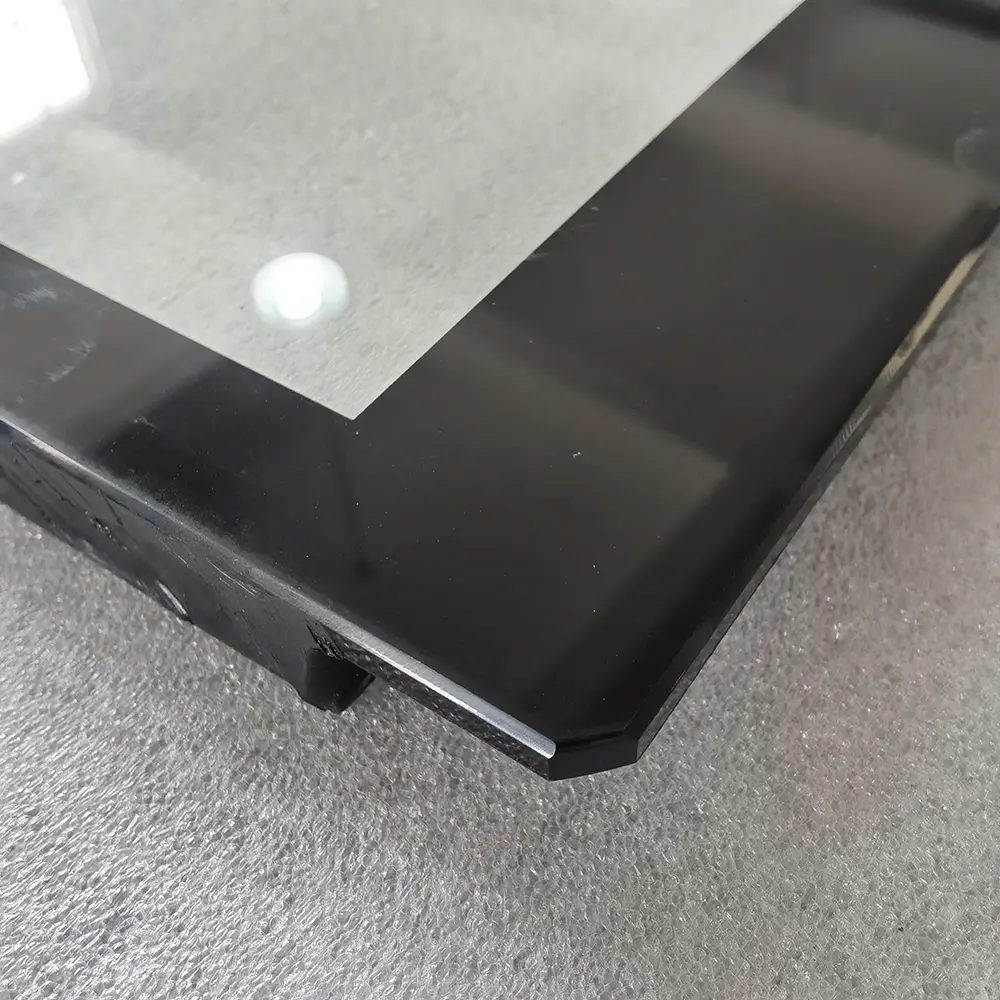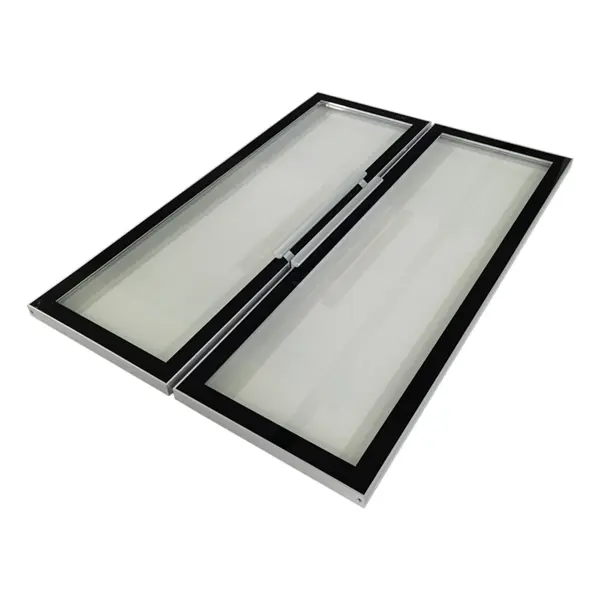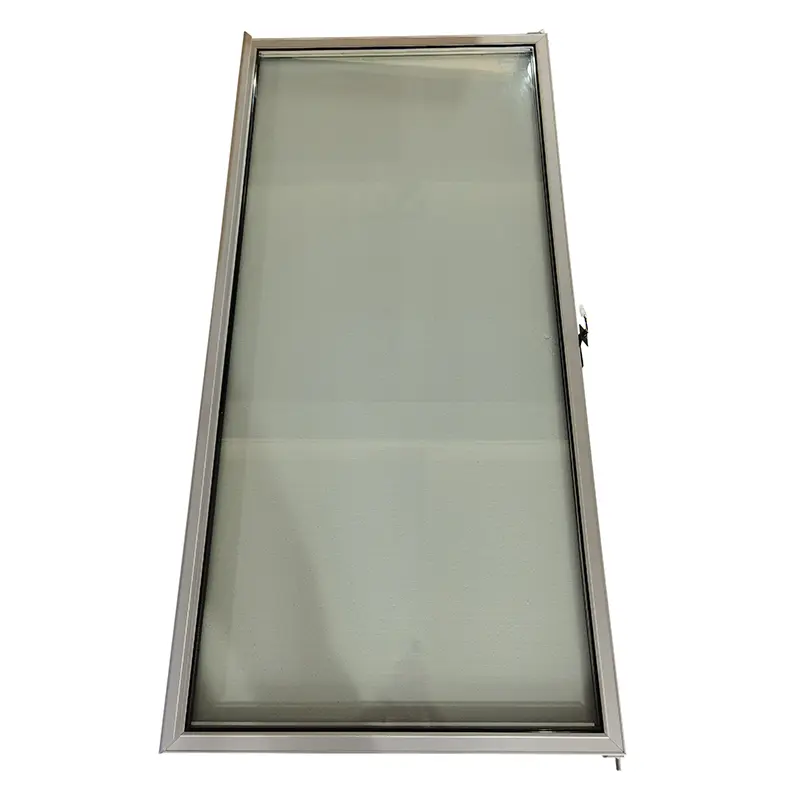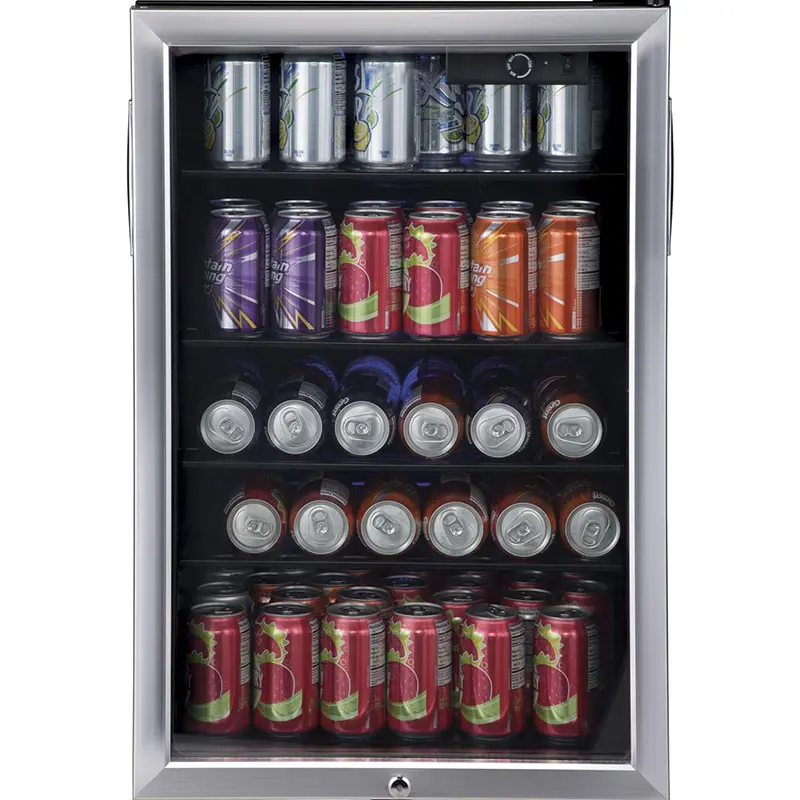Product Details
| Feature | Description |
|---|---|
| Type | Side Double Glazing for Cake Showcase |
| Glass | Tempered, Low-E |
| Insulation | Double Glazing, Triple Glazing |
| Insert Gas | Air, Argon; Krypton is optional |
| Glass Thickness | 8mm glass 12A 4mm glass; 12mm glass 12A 4mm glass |
| Spacer | Mill finish aluminum filled with desiccant |
| Seal | Polysulfide & Butyl Sealant |
| Color | Black, Silver, Red, Blue, Green, Gold, Customized |
| Temperature | 0℃-22 ℃ |
| Application | Display Cabinet, Showcase, etc. |
| Usage Scenario | Bakery, Cake Shop, Supermarket, Fruit Store, etc. |
| Package | EPE foam Seaworthy wooden case (Plywood Carton) |
| Service | OEM, ODM, etc. |
| After-sales Service | Free Spare Parts |
| Warranty | 1 Year |
Common Product Specifications
| Specification | Details |
|---|---|
| Acoustic Insulation | Excellent soundproofing |
| Thermal Efficiency | Superior insulation |
| Durability | Long-lasting with robust edge seal |
| Space-Saving Design | Thin profile |
| Energy Savings | Reduces need for heating/cooling |
Product Manufacturing Process
Vacuum Insulated Glass (VIG) is manufactured by creating a vacuum space between two panes of glass. The process begins with glass cutting and cleaning, followed by the application of a low-emissivity coating. The panes are then assembled with a nonevacuated spacer and sealed at the edges with a durable sealant to maintain the vacuum. A vacuum pump is used to evacuate the space between the panes before the final seal is applied. The vacuum prevents thermal conduction and convection, offering substantial energy efficiency. According to authoritative sources, the VIG production process must ensure the integrity of the vacuum seal to guarantee performance.
Product Application Scenarios
Vacuum Insulated Glass is versatile, with applications spanning residential and commercial buildings where energy efficiency is prioritized. In showcases and display cabinets, VIG helps maintain consistent interior temperatures, crucial for preserving perishable goods. Its slim design makes it suitable for retrofits in historic buildings, balancing aesthetic preservation with modern insulation needs. In automotive contexts, VIG enhances climate control efficiency, reducing fuel consumption. As the demand for sustainable solutions grows, VIG continues to gain traction in diverse sectors, supported by studies highlighting its effectiveness in reducing energy consumption. This technology is a key driver in achieving energy-efficiency goals globally.
Product After-Sales Service
Our suppliers provide comprehensive after-sales service, including free spare parts and expert assistance. This ensures reliable product performance and customer satisfaction over the product's lifespan.
Product Transportation
Products are securely packaged with EPE foam and seaworthy wooden cases to prevent damage during transit. Our suppliers ensure timely and safe delivery to your location.
Product Advantages
- Exceptional thermal and acoustic insulation
- Durable and long-lasting construction
- Eco-friendly with significant energy savings
- Thin, space-saving design ideal for various applications
Product FAQ
- What are the benefits of Vacuum Insulated Glass?
Vacuum Insulated Glass offers superior thermal and acoustic insulation compared to traditional glazing. Its space-saving design and durability make it ideal for energy-efficient applications, providing long-term cost savings by reducing heating and cooling needs. - How is Vacuum Insulated Glass different from double glazing?
While both provide insulation, VIG uses a vacuum between panes to prevent thermal transfer, resulting in thinner profiles and better performance. This technology is especially advantageous for applications requiring space efficiency without compromising on insulation quality. - Can Vacuum Insulated Glass be used in retrofits?
Yes, its slim profile makes it suitable for retrofits, especially in buildings where maintaining historical aesthetics is important. VIG improves insulation while preserving existing architectural features, offering a modern solution to energy efficiency challenges in older structures. - Are there any environmental benefits to using VIG?
By improving building insulation and reducing the reliance on artificial heating and cooling, VIG contributes to energy conservation and lowers carbon footprints. Its eco-friendly nature aligns with global sustainability goals, making it a preferred choice for green building projects. - What maintenance does Vacuum Insulated Glass require?
VIG requires minimal maintenance due to its durable construction. Regular cleaning is sufficient to maintain its performance and appearance, ensuring long-lasting benefits with little upkeep required. - How do suppliers ensure the quality of Vacuum Insulated Glass?
Suppliers implement rigorous quality control measures to ensure the integrity of the vacuum seal and overall product quality. This includes thorough testing during manufacturing and before delivery to guarantee high performance and durability. - Is there a warranty for Vacuum Insulated Glass products?
Yes, our suppliers offer a standard one-year warranty that covers manufacturing defects and ensures reliable performance. Extended warranties may also be available depending on specific supplier policies. - What are the cost implications of using VIG?
While initially more expensive, VIG offers significant long-term savings by reducing energy costs. The initial investment is offset by decreased energy bills and enhanced building comfort, making it a cost-effective choice over time. - Can Vacuum Insulated Glass improve indoor comfort?
Yes, VIG enhances indoor comfort by maintaining stable temperatures and reducing noise pollution. Its thermal efficiency ensures a comfortable environment year-round, further reinforced by its acoustic insulation properties. - Where can I find reliable Vacuum Insulated Glass suppliers?
You can contact us for quotes and supplier recommendations. Our partners are experienced in delivering high-quality VIG products with reliable service and competitive pricing.
Product Hot Topics
- The Rise of Vacuum Insulated Glass in Modern Construction
As sustainability becomes a focal point in construction, VIG emerges as a key player due to its remarkable insulation properties. Architects and builders are increasingly turning to VIG in response to stringent energy efficiency regulations. This trend underscores the importance of VIG in achieving eco-friendly building objectives and addressing climate change concerns. Suppliers of Vacuum Insulated Glass Quotes are witnessing higher demand, capitalizing on the growing need for sustainable material solutions in today's construction landscape. - Innovations Driving the Vacuum Insulated Glass Market
The Vacuum Insulated Glass market is witnessing significant innovations aimed at improving performance and reducing costs. Advances in production technology are paving the way for more affordable VIG solutions. Suppliers are at the forefront of these developments, offering enhanced products that meet diverse customer needs. These innovations are crucial for the broader adoption of this technology, promising to reshape how buildings are insulated across various sectors. Vacuum Insulated Glass Quotes now reflect a blend of cutting-edge technology and cost-effectiveness, attracting more interest from builders and developers worldwide. - Vacuum Insulated Glass: The Future of Energy Efficiency
Vacuum Insulated Glass represents the future of energy efficiency in the building industry. As the world shifts towards more sustainable practices, the demand for high-performance insulation solutions like VIG is skyrocketing. Suppliers are crucial in facilitating this transition, providing quotes and products that align with the sustainability goals of modern construction projects. By prioritizing energy efficiency, VIG suppliers contribute significantly to reducing building-related carbon emissions, making them vital players in the fight against climate change. - Choosing the Right Suppliers for Vacuum Insulated Glass Quotes
Selecting reliable suppliers for Vacuum Insulated Glass Quotes is essential to ensure product quality and performance. Reputable suppliers offer comprehensive quotes and expert guidance, helping clients understand the benefits and applications of VIG. They provide tailored solutions that meet specific project needs, ensuring optimal energy efficiency and long-term savings. With the growing importance of sustainability, partnering with the right suppliers is key to leveraging the full potential of Vacuum Insulated Glass in any construction endeavor. - Challenges in Bringing Vacuum Insulated Glass to the Market
Despite its advantages, Vacuum Insulated Glass faces challenges in widespread adoption. High initial costs and limited regional availability pose significant hurdles. Suppliers are addressing these issues by optimizing production processes and expanding distribution networks. By providing competitive quotes and educating stakeholders on VIG's long-term benefits, suppliers are instrumental in overcoming market barriers. Their efforts are crucial in making VIG more accessible and affordable, enabling more projects to benefit from this advanced insulation technology. - The Role of Vacuum Insulated Glass in Sustainable Design
Sustainable design strategies increasingly incorporate Vacuum Insulated Glass as a core component. Its ability to deliver outstanding thermal insulation with minimal material usage makes it a preferred choice for eco-conscious architects and developers. Suppliers play a pivotal role in this integration, offering quotes and expertise that guide sustainable building practices. By facilitating the use of VIG in green design, suppliers help clients achieve their environmental goals and create buildings that are both energy-efficient and aesthetically pleasing. - Understanding Vacuum Insulated Glass Quotes: What to Expect
When requesting Vacuum Insulated Glass Quotes, it's essential to understand the key factors influencing pricing and specifications. Quotes typically reflect the glass type, thickness, and desired performance characteristics. Reliable suppliers provide detailed breakdowns, ensuring transparency and helping clients make informed decisions. By comprehending the elements involved in VIG quotes, clients can better align their expectations and budgets, ensuring that they secure the best possible solutions for their insulation needs. - The Impact of Vacuum Insulated Glass on Indoor Comfort
Vacuum Insulated Glass significantly enhances indoor comfort by maintaining consistent temperatures and minimizing outside noise. This makes it an ideal choice for both residential and commercial applications where occupant comfort is a priority. Suppliers offer Vacuum Insulated Glass Quotes that highlight these benefits, emphasizing the material's contribution to creating comfortable, energy-efficient environments. As awareness of indoor air quality and comfort grows, VIG's role in enhancing occupant well-being becomes increasingly prominent. - Vacuum Insulated Glass: A Game-Changer for Historic Buildings
For historic building renovations, retaining aesthetic integrity while improving energy efficiency is challenging. Vacuum Insulated Glass offers a viable solution, providing modern insulation without altering original architectural features. Suppliers are instrumental in this context, offering quotes and products that meet the unique needs of heritage projects. By enabling the preservation of historical aesthetics with modern technology, VIG suppliers help bridge the gap between past and present, ensuring that heritage buildings meet contemporary energy standards. - Comparing Vacuum Insulated Glass with Traditional Glazing
When considering glazing options, understanding the differences between Vacuum Insulated Glass and traditional glazing is crucial. VIG offers superior thermal and acoustic insulation, making it more efficient than standard double or triple glazing. Its slim design and durability further enhance its appeal. Suppliers provide detailed quotes that help clients compare these options, highlighting VIG's advantages. By presenting clear comparisons, suppliers assist clients in making choices that align with their energy efficiency goals and project requirements.
Image Description
There is no picture description for this product






